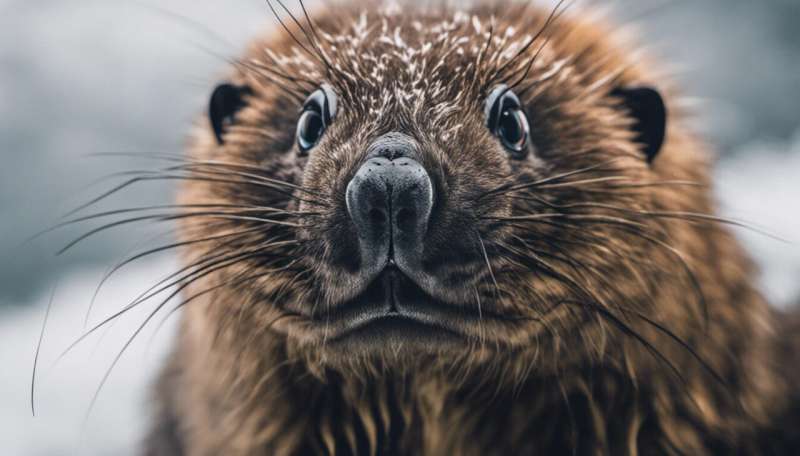This article has been reviewed according to Science X's editorial process and policies. Editors have highlighted the following attributes while ensuring the content's credibility:
fact-checked
peer-reviewed publication
trusted source
proofread
Could mink farms be the source of the next flu pandemic?

Urgent action is needed to address the significant risk posed by fur farms for the emergence of future viral pandemics, Imperial scientists warn.
Mink fur farms could provide the optimum conditions for H5N1 influenza to mutate and make the jump to humans, potentially leading to the next global pandemic, warn scientists from Imperial College London.
In an opinion piece published this week in Proceedings of the National Academy of Sciences, leading virologists from Imperial highlight mink fur farming as a major global biosecurity risk, calling for urgent action to address the danger of a looming global pandemic.
The call coincides with reports this month of H5N1 outbreaks on fur farms in Finland.
Professor Wendy Barclay, head of the Department of Infectious Disease at Imperial College London, and Dr. Thomas Peacock, a virologist from Imperial College London and The Pirbright Virology Institute, highlight the significant risk from fur farms, adding that the practice should be placed in the same category as high-risk practices such as bushmeat trade and live animal markets.
Among the concerns, they highlight:
- Mink fur farms pose the most significant, avoidable biological threat for the next global influenza pandemic. The animals can readily catch and spread influenza and other respiratory viruses, and there is evidence of viruses jumping from the animals to other species (including SARS-CoV-2 and H5N1).
- The researchers argue that fur farming poses a greater threat to global health than poultry or pig farming, due to a combination of the mink's biology, housing conditions, and a lack of regulation and protective equipment in the handling and culling of animals.
- Ongoing H5N1 influenza outbreaks pose a significant pandemic risk, but so far cases have largely been restricted to wild birds or solitary mammals with little human interaction. Mink farms provide the perfect opportunity for H5N1 to spread quickly between animals and for viral mutations to accumulate, including adaptations which make it more transmissible to and between humans.
- The researchers warn that the use of antivirals in mink farms is not a viable option due to the significant risk of viruses developing resistance (termed antimicrobial resistance), rendering the drugs ineffective for treating humans.
- They argue that restricting and/or heavily regulating mink fur farming in Europe and North America offers the single most effective, readily enforceable strategy to reduce the risk of an H5N1 pandemic event in the near future.
The authors warn that "fur farming should be in the same category of high-risk practices as the bushmeat trade and live animal markets. These activities all increase the likelihood of future pandemics. At the very least, biosecurity practices and active surveillance at fur farms must be reviewed, greatly enhanced, and closely enforced."
More information: Thomas P. Peacock et al, Mink farming poses risks for future viral pandemics, Proceedings of the National Academy of Sciences (2023). DOI: 10.1073/pnas.2303408120




















